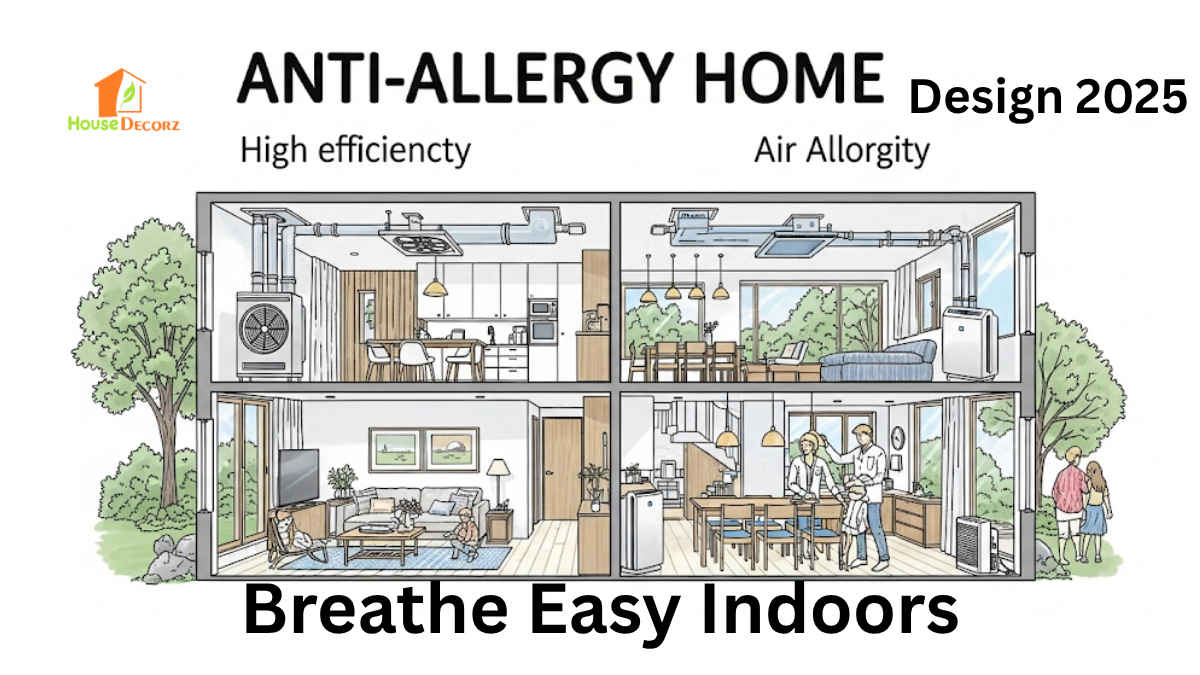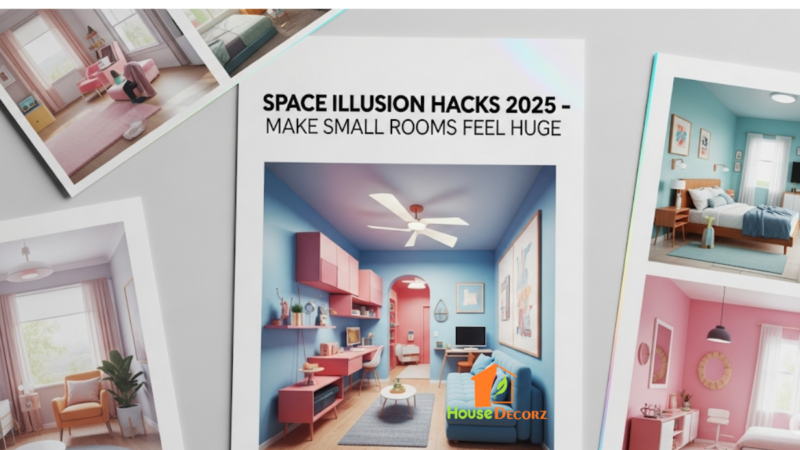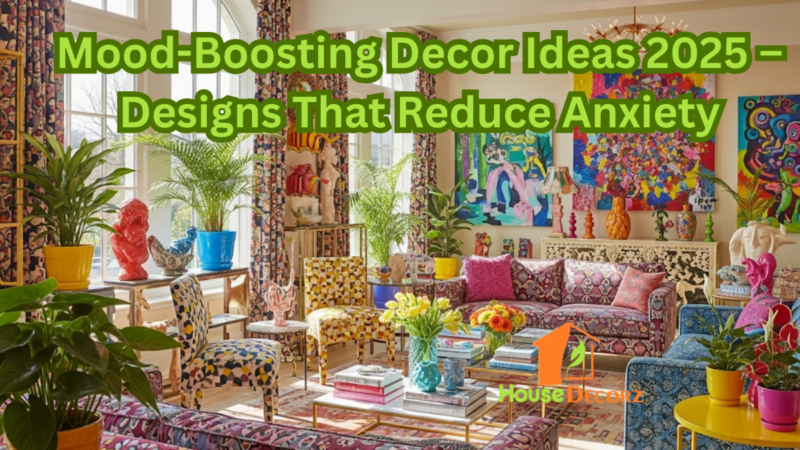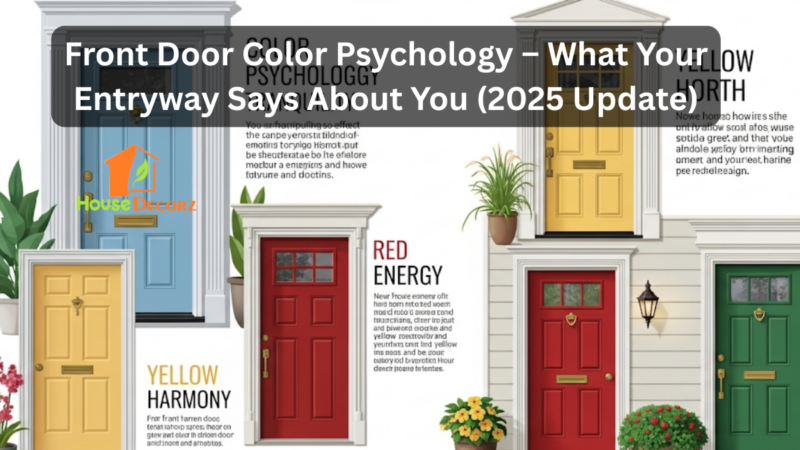Anti-Allergy Home Design 2025 – Breathe Easy Indoors

In an era where indoor air quality is increasingly recognized as a crucial determinant of our health, designing homes that actively combat allergens is no longer a niche concern but a necessity.
For millions worldwide, the invisible threats of dust mites, pollen, pet dander, mold, and volatile organic compounds (VOCs) can turn a comfortable abode into a source of constant discomfort.
As we look towards Anti-Allergy Home Design 2025, the emphasis is on creating living environments where every breath is clean, crisp, and free from irritants.
This isn’t just about symptom management; it’s about proactive design that transforms your home into a true sanctuary of health.
The Foundation: Superior Air Filtration and Ventilation
At the core of any allergy-friendly home is a robust system for managing air quality. This goes beyond simply opening windows.
Advanced HVAC Systems with HEPA Filters
Your home’s heating, ventilation, and air conditioning (HVAC) system is your first line of defense. For Anti-Allergy Home Design 2025, upgrading to an HVAC system equipped with high-efficiency particulate air (HEPA) filters is paramount.
Unlike standard filters, HEPA filters are designed to capture at least 99.97% of airborne particles 0.3 microns in size, including pollen, dust mites, mold spores, and pet dander.
Regularly scheduled filter replacements are non-negotiable to maintain optimal performance.
Consider smart HVAC systems that can automatically adjust ventilation based on indoor air quality readings, providing real-time protection.
Whole-House Ventilation Solutions
Beyond filtration, proper ventilation is essential to dilute and remove indoor pollutants. Energy recovery ventilators (ERVs) and heat recovery ventilators (HRVs) are excellent investments.
These systems bring fresh outdoor air indoors while exhausting stale indoor air, minimizing heat or cooling loss. This constant air exchange prevents the buildup of allergens and VOCs without compromising energy efficiency.
For bathrooms and kitchens, powerful exhaust fans vented directly outside are crucial to prevent mold growth and remove cooking fumes.
Strategic Air Purifiers
Even with a high-quality HVAC system, portable air purifiers can provide an extra layer of protection in specific rooms, especially bedrooms where allergen exposure during sleep can be critical.
Look for purifiers with true HEPA filters and activated carbon filters to tackle both particulate matter and odors/VOCs.
Placing one near your bed or in the main living area can significantly reduce airborne allergens in those zones.
Flooring and Surfaces: Minimizing Allergen Traps
Traditional flooring and surface choices can be notorious hiding spots for dust and allergens. Anti-Allergy Home Design 2025 favors smooth, easy-to-clean materials.
Ditching Carpets for Hard Flooring
Carpets are a major reservoir for dust mites, pet dander, pollen, and mold spores, as they trap these particles deep within their fibers.
The most significant change for an allergy-proof home is to replace wall-to-wall carpeting with hard, smooth flooring options.
Hardwood, laminate, vinyl plank, tile, or polished concrete are ideal choices. They don’t trap allergens, making them simple to clean with regular sweeping, vacuuming (with a HEPA filter), and damp mopping.
Washable Area Rugs (Used Sparingly)
If you desire the warmth and aesthetic appeal of rugs, opt for small, washable area rugs made from natural fibers like cotton or jute.
These should be able to fit into your washing machine or be easily cleaned. Position them in areas where they serve a functional purpose (e.g., entryways to trap outdoor allergens) rather than covering large expanses, and wash them frequently.
Smooth, Non-Porous Surfaces
For countertops, tables, and other surfaces, choose smooth, non-porous materials like quartz, granite, stainless steel, glass, or solid wood.
These surfaces are easy to wipe down and don’t provide nooks and crannies for allergens to accumulate. Avoid textured or porous surfaces that can harbor dust and moisture.
Fabric and Furniture Choices: The Allergen-Resistant Wardrobe
The materials your furniture and textiles are made from play a critical role in controlling allergens. This is where allergy-proof furniture truly shines.
Opting for Upholstery Alternatives
Upholstered furniture, particularly pieces with intricate tufting or deep crevices, can be dust mite magnets. For severe allergies, consider furniture made from leather, faux leather, wood, metal, or plastic, as these surfaces are easily wipeable.
If upholstered pieces are a must, choose tightly woven fabrics like microfiber or natural fibers like linen that are easier to clean and less prone to trapping allergens. Slipcovers that can be regularly laundered are also an excellent option.
Washable Window Treatments
Heavy drapes and blinds can accumulate significant amounts of dust and allergens. Instead, choose washable window treatments like lightweight cotton or synthetic blend curtains that can be laundered regularly.
Simple roller blinds or vertical blinds are also good options as they offer fewer surfaces for dust collection and are easy to wipe clean.
Hypoallergenic Bedding and Linens
The bedroom is often where allergen exposure is highest due to dust mites. Invest in hypoallergenic bedding, including mattress encasings, pillow covers, and duvet covers that zip completely shut.
These create a barrier against dust mites and their allergens. Wash all bedding, including sheets, pillowcases, and duvet covers, weekly in hot water (at least 54°C or 130°F) to kill dust mites.
Choose pillows and duvets with synthetic fillings rather than down or feathers, which can trigger allergies for some.
Beyond the Basics: Smart Storage and Low-VOC Materials
Consider these additional layers of protection for an even more effective Anti-Allergy Home Design 2025.
Strategic Storage for Dust-Free Decor
Clutter provides more surfaces for dust to settle. Embrace a minimalist approach and utilize closed storage solutions. Built-in cabinetry, wardrobes with doors, and storage bins with lids can keep items neatly tucked away and reduce exposed surfaces for dust accumulation.
Display fewer decorative items and choose those with smooth, easily wipeable surfaces. This is the essence of dust-free decor.
Low-VOC Paints and Building Materials
VOCs are chemicals released into the air from various building materials, paints, and furnishings, contributing to indoor air pollution and potentially triggering respiratory issues.
When renovating or decorating, choose low-VOC or zero-VOC paints, glues, sealants, and flooring. Look for certifications like GreenGuard or GREENGUARD Gold to ensure healthier product choices.
Pet-Friendly, Allergy-Conscious Design
If you have pets, regular grooming and designated pet-free zones (like the bedroom) can help. Choose pet beds with washable covers and vacuum pet areas frequently.
Consider a robot vacuum cleaner for daily maintenance, especially on hard floors.
Recommendation
Sustainable Flooring Trends 2025 – Best Eco-Friendly Options for Your Home
Tiny Home Designs 2025: Small Space Solutions & Affordable Living Ideas
Luxury Furniture Trends 2025: Designer Sofas & Premium Materials Guide
Sustainable Home Decor 2025: Eco-Friendly Furniture & Green Living Tips
Smart Home Gadgets 2025: Top Automation & Security Devices
FAQs
Q1: What are the absolute must-have features for Anti-Allergy Home Design 2025?
A1: The top priorities are an HVAC system with HEPA filtration, hard flooring instead of carpeting, and hypoallergenic, washable bedding. These three elements form the most impactful foundation for reducing indoor allergens.
Q2: How often should I clean my home to maintain an anti-allergy environment?
A2: Regular and frequent cleaning is key. Aim to vacuum hard floors and dust surfaces 1-2 times per week. Wash bedding weekly in hot water. Clean bathroom and kitchen surfaces frequently to prevent mold growth.
Q3: Are all air purifiers effective for allergies? What should I look for?
A3: No, not all are equally effective. Look for “True HEPA” filters, which capture the smallest particles. An activated carbon filter is also beneficial for removing odors and volatile organic compounds (VOCs). Check the CADR (Clean Air Delivery Rate) for the size of your room.
Q4: Can I keep pets in an allergy-friendly home?
A4: Yes, but with extra precautions. Keep pets out of bedrooms, bathe them regularly to reduce dander, and vacuum frequently with a HEPA-filtered vacuum. Smooth, hard surfaces are easier to clean pet dander from than carpets.
Q5: What are VOCs, and why are they important in anti-allergy design?
A5: VOCs (Volatile Organic Compounds) are gases emitted from various products like paints, cleaners, and furniture. They can irritate the respiratory system and worsen allergy or asthma symptoms. Choosing low-VOC or zero-VOC products significantly improves indoor air quality.
Final Thought
Designing an Anti-Allergy Home Design 2025 is a holistic endeavor, addressing everything from the air you breathe to the surfaces you touch.
It’s about making informed choices that prioritize health and well-being without sacrificing aesthetics.
By embracing dust-free decor, investing in allergy-proof furniture, and focusing on superior air management, you can transform your living space into a haven where you can genuinely breathe easy indoors.
This proactive approach empowers you to create an environment that supports your health, allowing you and your family to thrive without the constant battle against allergens.






